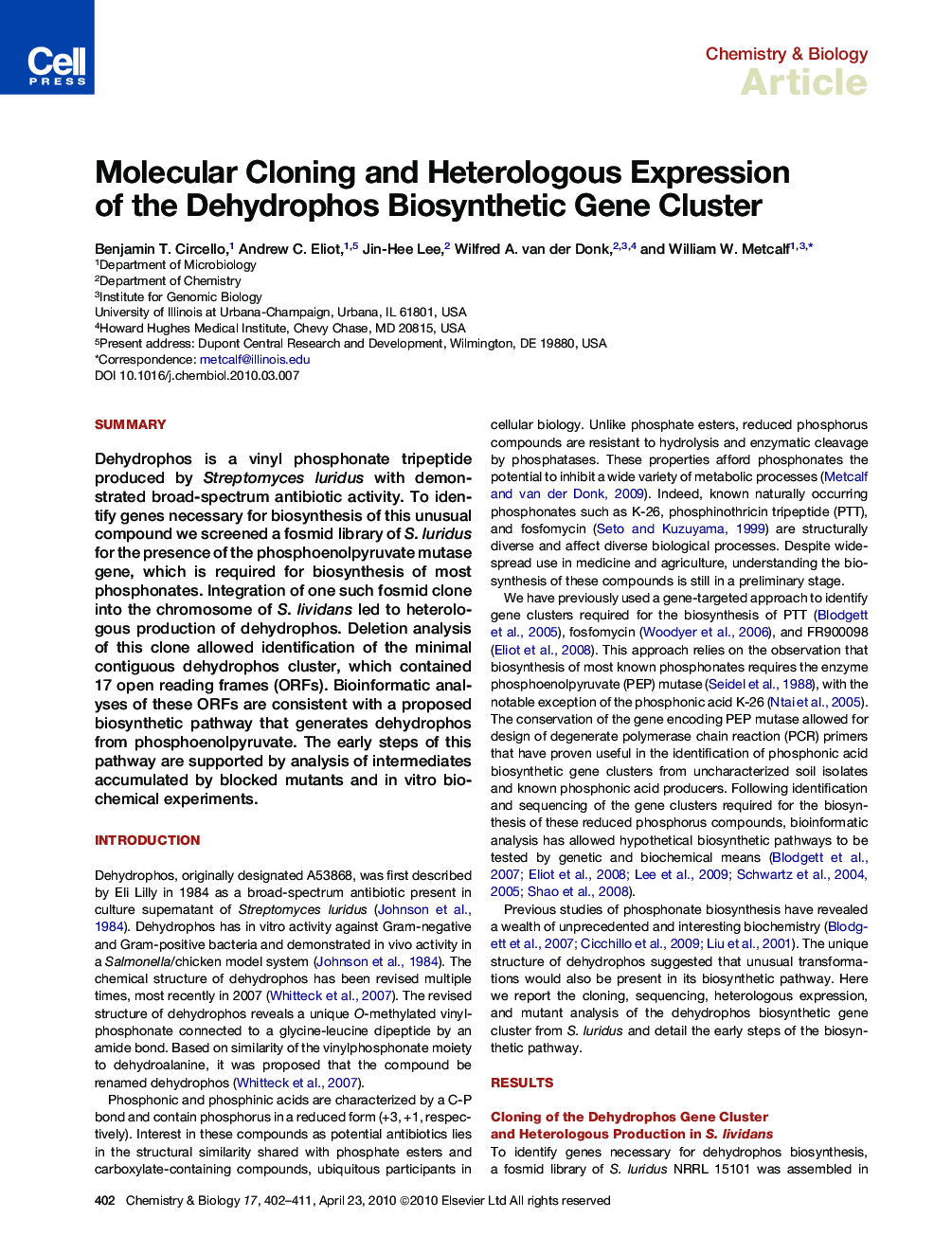| Article ID | Journal | Published Year | Pages | File Type |
|---|---|---|---|---|
| 1392540 | Chemistry & Biology | 2010 | 10 Pages |
SummaryDehydrophos is a vinyl phosphonate tripeptide produced by Streptomyces luridus with demonstrated broad-spectrum antibiotic activity. To identify genes necessary for biosynthesis of this unusual compound we screened a fosmid library of S. luridus for the presence of the phosphoenolpyruvate mutase gene, which is required for biosynthesis of most phosphonates. Integration of one such fosmid clone into the chromosome of S. lividans led to heterologous production of dehydrophos. Deletion analysis of this clone allowed identification of the minimal contiguous dehydrophos cluster, which contained 17 open reading frames (ORFs). Bioinformatic analyses of these ORFs are consistent with a proposed biosynthetic pathway that generates dehydrophos from phosphoenolpyruvate. The early steps of this pathway are supported by analysis of intermediates accumulated by blocked mutants and in vitro biochemical experiments.
► The dehydrophos biosynthetic gene cluster was identified ► Proposed biosynthetic framework supported by genetic and biochemical evidence ► Preliminary evidence supports an uncommon method for peptide bond formation ► Discovery of dhpI, a gene likely involved in the novel methylation of dehydrophos
